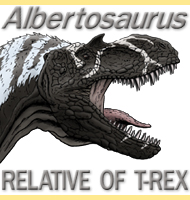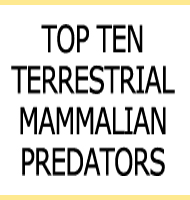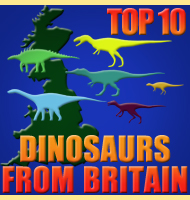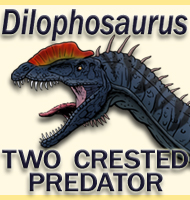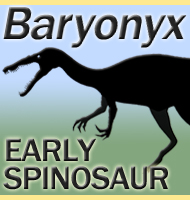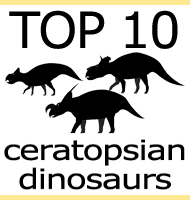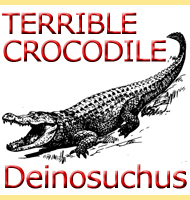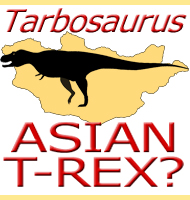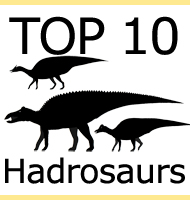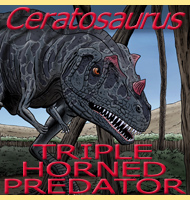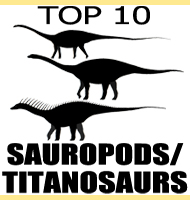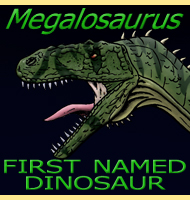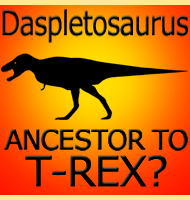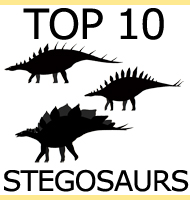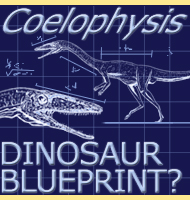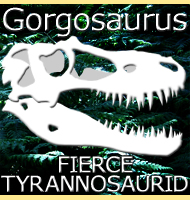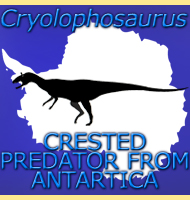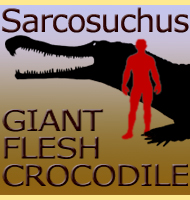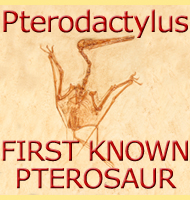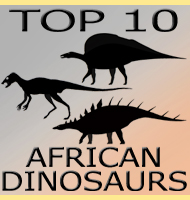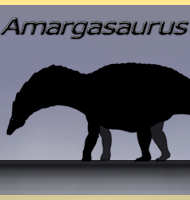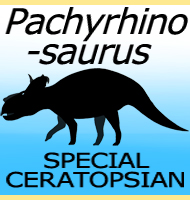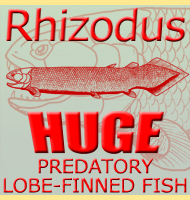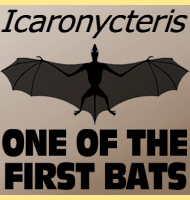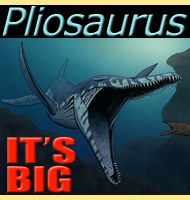


Top Ten Predatory Dinosaurs
A look at ten of some of the most famous, largest and specialised predatory dinosaurs that are known to science. If you would like to know much more detailed information about these dinosaurs, just click on their names to go to their main pages.
10 - Herrerasaurus
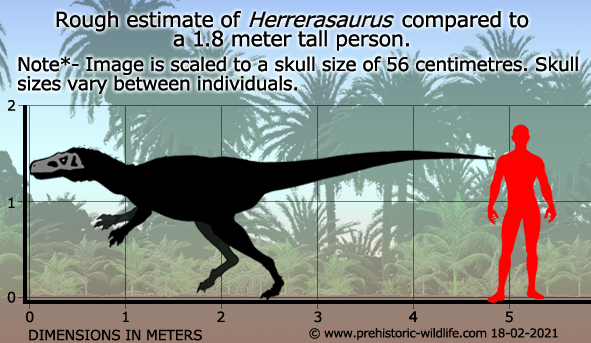
The oldest dinosaur on this list, Herrerasaurus dates all the way back to the Triassic when dinosaurs were living in a world dominated by large rauisuchians. But Herrerasaurus was no slouch, and was perfectly capable of hunting other primitive dinosaurs that were mostly much smaller than Herrerasaurus. However despite the fact that Herrerasaurus superficially looks like the later theropods in form, it displays a number of features that are individually common across different dinosaur groups. For this reason Herrerasaurus is considered by some to represent one of the oldest dinosaur forms that predates the split into the two main saurischian (lizard hipped) and ornithischian (bird hipped) groups. Herrerasaurus also has a sliding jaw joint, very unusual for a dinosaur, but something that may have helped it to grip prey with its mouth.
9 - Yutyrannus
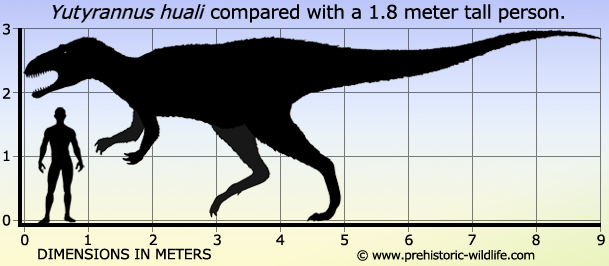
When named in 2012 Yutyrannus made people sit up and take notice. Not only was this a nine meter long tyrannosaur, it had a body that was covered in hair-like feathers. This made Yutyannus the largest confirmed feathered dinosaur, easily beating the then previous record holder, the therizinosaur Beipiaosaurus. Yutyrannus re-ignited the debate over whether all dinosaurs were feathered, though the actuality of the situation is probably that some were and some were not. Study of the fossil site of the Yutyrannus holotype indicates that it would have been at a high elevation back in the early Cretaceous with a cool average air temperature. Skin impressions of other tyrannosaurs speculated to live in warmer climates however have been preserved without feather impressions, showing that the question over if dinosaurs had feathers should be dealt with on a case by case basis rather than just assumed to apply to the whole.
8 - Giganotosaurus
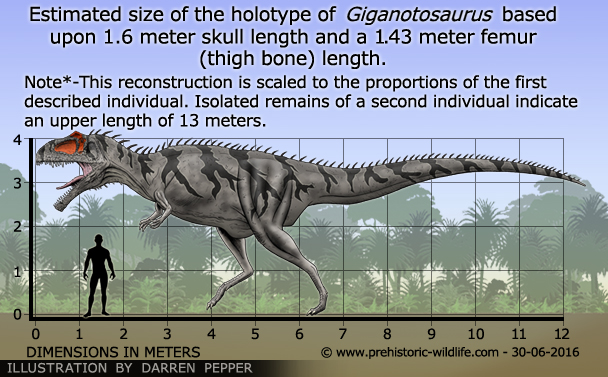
This
is the dinosaur that in 1995 made headlines around the world for
being bigger than Tyrannosaurus. Unfortunately
this estimate is based
upon an estimated range of twelve to thirteen meters long, and if the
lower end of the estimate proves more correct then it is actually not
bigger at all, just similar in size. Also at the higher end it
would be only around twenty centimetres longer that the longest
recorded Tyrannosaurus specimen. Despite this
however, partial
remains of a second individual, bigger in scale to the type specimen
suggest that Giganotosaurus may have actually still
grown quite larger
than Tyrannosaurus, although by how much still
remains uncertain in
the absence of more fossils.
Arguments
about which dinosaur was bigger often carry away from the actual facts
of Giganotosaurus which was a member of the
carcharodontosaurid group
of theropod dinosaurs. Others of this group such as
Carcharodontosaurus
also reached large sizes that were comparable to
Tyrannosaurus, but these dinosaurs actually had
very different teeth
that worked to slice flesh rather than crush bones and armour. This
means that Giganotosaurus may have had to deliver a
series of bites to
the body of its prey so that it succombed to blood loss and collapsed.
It’s possible that Giganotosaurus may have also
left most of the
bones untouched and just ate the soft parts to avoid unnessecary damage
to its teeth.
7 - Acrocanthosaurus
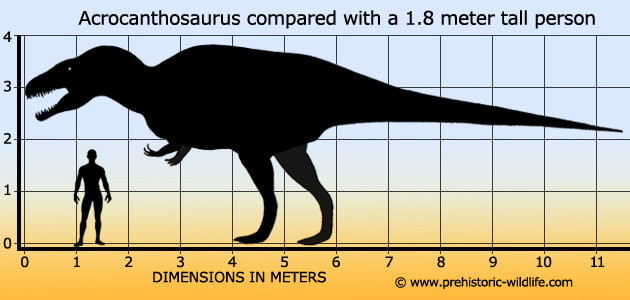
This
theropod lived during the early/mid Cretaceous, yet it grew to a size
that was comparable to the later Tyrannosaurus.
This large size
suggests that Acrocanthosaurus was the apex
predator of North
America, after Allosaurus and before the
tyrannosaurs, and with
most of the other predatory dinosaurs such as Deinonychus
being much
smaller, Acrocanthosaurus would have dominated
the landscape.
Large
size is not the only claim to fame for Acrocanthosaurus
as it also
featured vertebrae that had elongated neural spines. These projected
upwards to support a hump that ran down the back (it has also been
suggested that they supported a skin sail as well as supporting a row
of spines, but these theories are not as widely accepted as they used
to be). This hump probably served as fat storage for lean times,
but it may have also been a display feature that showed others of its
kind how successful a predator an individual was, to a sign of
maturity to even just making Acrocanthosaurus look
like it was even
bigger.
6 - Spinosaurus

Aside from possibly being the largest theropod on the list, Spinosaurus is easily the most specialised. One specialisation, the reason for the name and the feature that most people are familiar with, is the enlarged neural spines of the dorsal vertebrae that supported either a skin sail or a hump on back. The purpose for this growth has been explained for everything from thermoregulation, display, to fat storage but it still remains a mystery to be certain. The features that reveal more about the actual hunting behaviour of Spinosaurus are the long crocodile-like jaws that were filled with narrow conical teeth. These jaws and teeth are seen in other piscivorous (fish eating) animals such as crocodiles and even pterosaurs. Additionally the snout of Spinosaurus is covered in pores that seem to have been the housing for pressure sensors that allowed Spinosaurus to detect passing fish in the water. These features combined now give what is considered a much more accurate depiction of Spinosaurus as a large fish hunter rather than a generalist predator of other dinosaurs.
5 - Carnotaurus
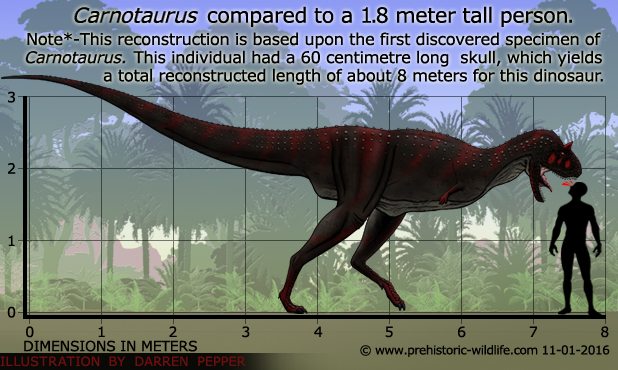
Dinosaurs
that look different are on the road to overnight fame, and
Carnotaurus achieved this by having two stubby horns
growing from the
skull above its eyes. Carnotaurus was a large
abelisaur theropod, a
group noted for having short but tall skulls, and arms that are even
more vestigial than those of the tyrannosaurs. One popular idea about
predators like Carnotaurus is that they used their
narrow skulls like
hatchets, relying upon the momentum of their head movements to drive
their teeth through their prey rather than the bite muscles. The
skulls of abelisaurs were also well suited to the job of holding onto
prey, and if Carnotaurus managed to clamp its
jaws around the neck of
a prey animal, it may have been able to choke it with its jaws.
The
abelisaurs were one of the last two great groups of large theropod
dinosaurs, and while the tyrannosaurs dominated in the northern
continents, the abelisaurs held domain over the south, with earlier
theropod groups only existing in small fragmented populations. During
the late Cretaceous of South America, Carnotaurus
was one of the
greatest of the abelisaurs.
4 - Deinonychus
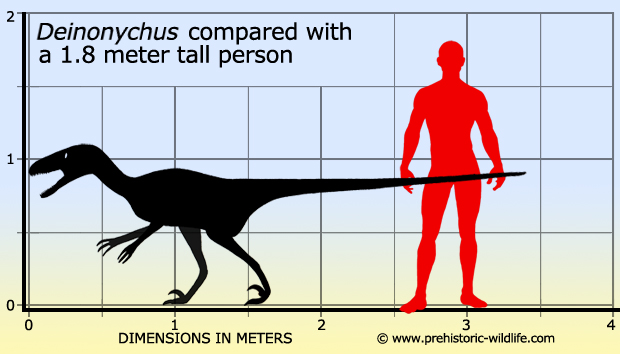
When people think ‘raptor’ they usually think about how Velociraptor was depicted in the ‘Jurassic Park’ movies, but what many people still do not realise is that these ‘raptors’ were actually based upon Deinonychus. This dinosaur would have been the terror of North America towards the end of the early Cretaceous, not just because of the long sickle shaped claws on its feet, but because Deinonychus is one of the main inspirations about dinosaurs hunting in packs. Although not all palaeontologists are convinced about this the idea has remained and continues to be studied, with more evidence about the possibility of pack hunting pointing towards Deinonychus than most other dinosaurs.
3 - Allosaurus
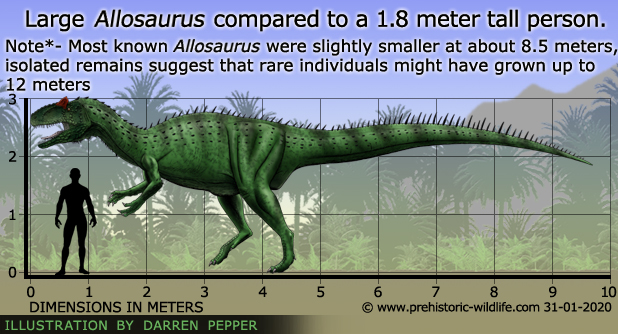
Not
only is Allosaurus the best represented large
theropod dinosaur in the
fossil record, it seems to have been ‘the’ predator design of the
late Jurassic. Aside from being numerous, many of the other large
Jurassic theropods are so much like Allosaurus that
palaeontologists
still today question if they really represent new dinosaur genera or
are merely different species of Allosaurus.
The
large number of remains of Allosaurus have allowed
for a lot of study
of this particular dinosaur. Injuries to the arms where tendons have
been ripped from the bones suggest that Allosaurus
was very physical in
its attacks upon other dinosaurs and it would have done so without much
thought or fear of injury to itself. This is further evidenced by
fossils that prove Allosaurus got into fights with
armoured dinosaurs
like Stegosaurus.
2 - Troodon
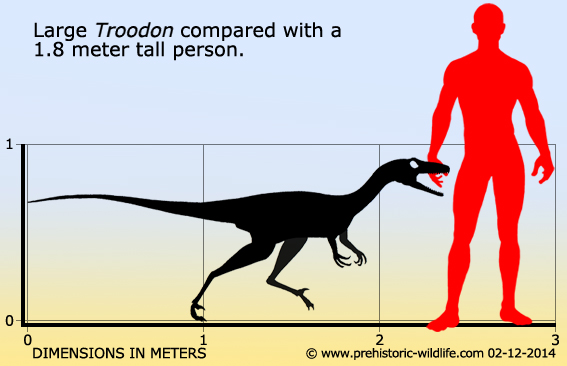
Troodon was a relatively small dinosaur without an especially powerful bite when compared to the other dinosaurs on this list; however it did have several things going for it that the others here did not. Studies and re-constructions of the brain have revealed that it was beginning to show the signs of folding, where more neural cells are packed into the same area that allows for more efficient brain functions. Second is the large size of the brain in relation to this dinosaur’s size, a controversial subject, but one that is not entirely without its merits. Third are the large forward facing eyes that would have allowed for exceptional stereoscopic vision even in low light conditions. Fourth and final is that one of the fingers was semi opposable to the others which on paper suggests that Troodon was better able to manipulate small objects, and interact with its environment. Had the mass extinction of dinosaurs not taken place at the end of the Cretaceous, dinosaurs like Troodon may have evolved to become the most intelligent life forms on the planet.
1 - Tyrannosaurus

This
dinosaur hardly needs any introduction as it is more famous than any
other prehistoric animal. Tyrannosaurus was the
pinnacle of large
theropod dinosaur evolution that was cut short by the mass extinction
of the dinosaurs at the end of the Cretaceous. Although no longer
considered to be the largest (Spinosaurus and Giganotosaurus
are
usually credited as being bigger) Tyrannosaurus
was possibly the
stronger with an incredible bite force and teeth designed for punching
through and crushing the bones of any other dinosaur. Whereas other
dinosaurs may have had to close their mouths around prey several times
to deliver a series of weakening bites, Tyrannosaurus
only had to
bite once.
In
the past Tyrannosaurus has been accused by some of
being just a
scavenger for a number of reasons that mostly connect to its
differences to other meat eating dinosaurs. Today however the idea
that Tyrannosaurus was only a scavenger is politely
put considered
extremely unlikely, and it is seen as a meat eater that primarily
hunted for its own food, but would also steal kills from other
predators and scavenge just like almost every other predator that ever
lived. More details about the arguments for and against the
scavenging theory are on the main Tyrannosaurus
page.
----------------------------------------------------------------------------
Random favourites
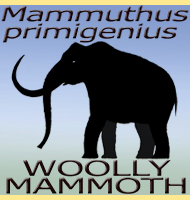 |
 |
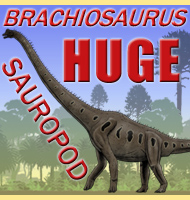 |
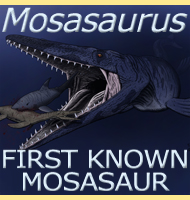 |
